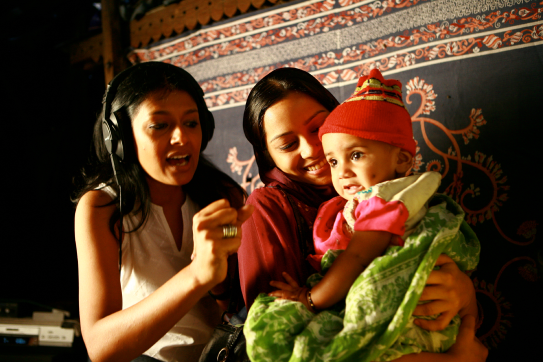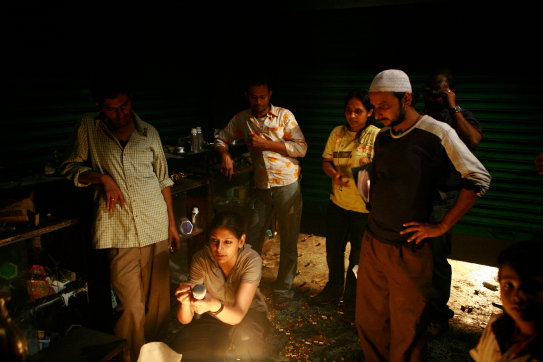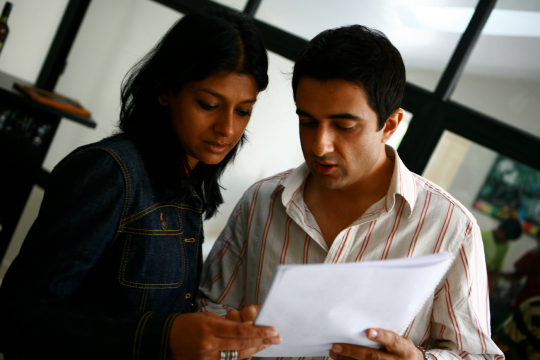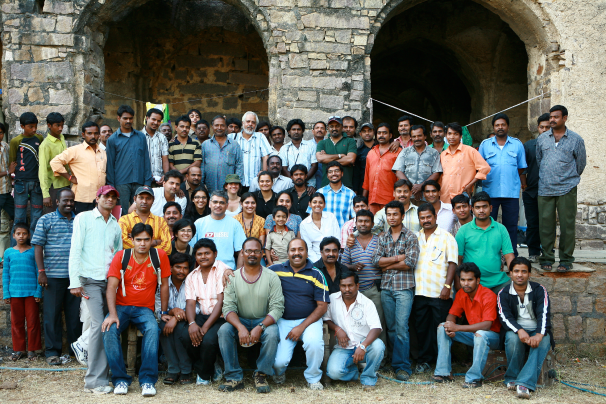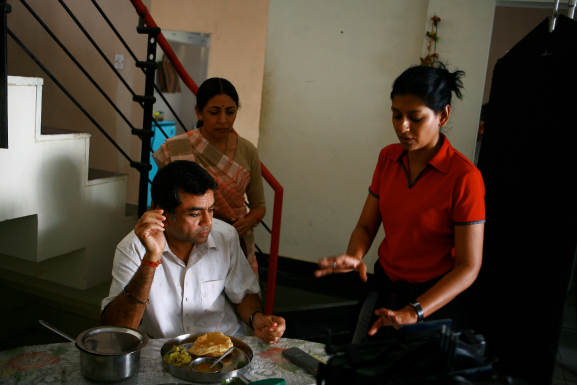The Journey of Making Firaaq
- April 17, 2023
The journey of making Firaaq has been more than a cathartic experience for me. It has pushed my boundaries beyond what I had imagined. I have enjoyed every phase of film making, with all its challenges, big and small. And I am grateful to all those who had their faith in me and the story I so wanted to tell. While it is a collaborative process, it is also a lonely one. I have never had to make so many decisions, multi task at all times and be responsible for so many people. In directing, I felt my many strands of interests came together and got subconsciously intertwined. With 13 years of acting experience in more than 30 films, I expected the transition to not be a difficult one. I was wrong. Making a film entailed much more than what one observes on the shooting set or imagines while watching a film. From an actor to a director, is like taking a quantum leap!
I don’t remember exactly when the seed of this film was sown. It had to do with waking up to newspapers filled with stories of violence; conversations about identity and communalism that would surface deep-seated prejudice and a strong notion of the ‘other’, turning it into a polarized debate. It had to do with meeting many victims of violence and even some who perpetrated it. But, most of all it had to do with those who remained willfully silent. The sadness, the anger, the helplessness kept growing and a deep desire to share all those stories with a larger group of people began to take roots. I didn’t start out looking for a story that I could direct, instead the stories compelled me to become a director.
Most films about riots are full of violence that they set out to critique. Also we have seen so much violence, both as fact and fiction, that we have become numb to the atrocities. So what really interested me was the unsettling normalcy of the aftermath. The exploration of the fierce and delicate emotions of fear, anxiety, prejudice and ambivalence in human relationships during such times is what Firaaq is all about. The ensemble structure of the film evolved organically because there was so much that needed to be heard and seen.
I began writing the stories around three years ago. Shuchi Kothari, based in Auckland, NZ, turned out to be the perfect writing partner, as she shared my values and concerns and had the experience of teaching screenplay writing at the University. The many drafts of the script were written between 2005 and 2008, through our meetings in India, UK and New Zealand, and via every conceivable medium of communication. We are especially indebted to Skype for those long distance sessions that finally shaped the screenplay! As we Skyped our way through various drafts, national and world events continued to impact our perceptions and many conversations found their way, directly or indirectly into our writing. The long gestation period was good for the script because it allowed stories to breathe and our characters to grow, making the script more layered and nuanced.
While writing, a mental casting was inevitable. Although I was not lucky enough to get all of them, the four I did were precious- Naseeruddin Shah, Paresh Rawal, Raghubir Yadav and Deepti Naval. I got to experience a diverse range of talent as I searched for my characters; and finally an incredible cast came together. The additions to the list were Sanjay Suri, Tisca Chopra, Shahana Goswami, Nowaz and many other wonderful actors. But the most challenging audition was for Mohsin, a six-year-old child in the film. I found Samad in the first of the eight different schools I visited in the old city of Hyderabad. The reason he wasn’t the instant choice was because he couldn’t stop smiling! And our little Mohsin of the film was a sad loner, who smiles only once in the film! So I pressed on through eight other schools before realizing that Samad was the one I was looking for. His eyes were full of wonder, innocence, intelligence and resilience and I knew that was my Mohsin.
Then came the actual shoot which had to be done in 30days because of the budgetary constraints. It was like doing five short films, one after another. We moved to a new location and had different set of actors every five days, and I myself had to be in a different state of mind each time to tell that particular story. To do a sync sound film where silence forms a large part of the soundscape, was not easy. We were in crowded places and to make people understand the need for silence was almost impossible. On the first outdoor night shoot, we needed to have a quiet crossroad with not a soul in sight. But to our horror, 10,000 people had gathered to watch the shooting! Our production team could not quite keep them at bay, and we were about to pack up, when I decided to take the mike and reach out with an impassioned speech. My own cast and crew laughed at my foolish attempt. To every one’s shock it worked and we actually shot rest of the night in peace and silence! I have realized that the only way to connect and get genuine support is to reach out and trust others.
The creative aspects seemed to be just a part of all the things I had to look into – from securing permits at the local police station, to calling in favours from anybody and everybody that I knew, and answering a hundred different questions posed by ten different departments, at any given time. In the midst of production issues and worrying about everything, I had to keep my creative sanity intact, and keep the spirits of the cast and crew high. But most importantly, create a sense of equanimity so that everyone, including me, could do our best.
While shooting is the most important aspect of the film making process, there is a lot more to do after that, which was completely new to me. I personally found editing to be the most exciting part of the whole filmmaking process. For one, after the madness of the shoot, it is a great to be in a quiet room, with just one more person as your collaborator. Second, you have all this material and now you can actually play around with it in the way you want! Although I had heard the old saying that a film is really made at the editing table, I understood the true meaning of it only when I went into the editing room for Firaaq. And for this I had the best partner I could have wished for – Sreekar Prasad, an eminent editor, whose sensitivity and temperament were a bonus. His contribution to the film has been enormous. Without hesitation I can say that through the whole post-production, he was my true friend and guide.
Even though the film has been completed for a while now, the journey has not. The final important phase is that of taking it to as many audiences as I can. The film has traveled to many parts of the world. People everywhere have empathized with the stories and the characters confirming for me that human emotions are universal. Be it Canada, US, UK, Greece, Korea, Singapore Dubai, and of course India, audiences have been able to relate to the film at a very personal level. The responses that are pouring in, now that the film has finally been released in India, have been truly gratifying.
Firaaq for me is not an end in itself. It is a means to stir a dialogue about our own fears, prejudices and responses to violence. But I also believe that having good intentions is not enough; the form it adopts in telling the story is just as important. No film is perfect and this too has its flaws, but going by the reactions I have been getting, I feel the intent with which I made Firaaq is being fulfilled and it has been well worth making it, against all odds.
During my many travels and interactions around the world, I have sensed a collective desire to understand the complex and violent world we inhabit and a palpable need for peace. I think Firaaq reflects this spirit and hope it continues to touch the hearts and minds of those who watch it. What compelled me to make this film is best captured in the words of Brecht, “Will there be singing in the dark times? Yes, there will be singing, of the dark times.”

